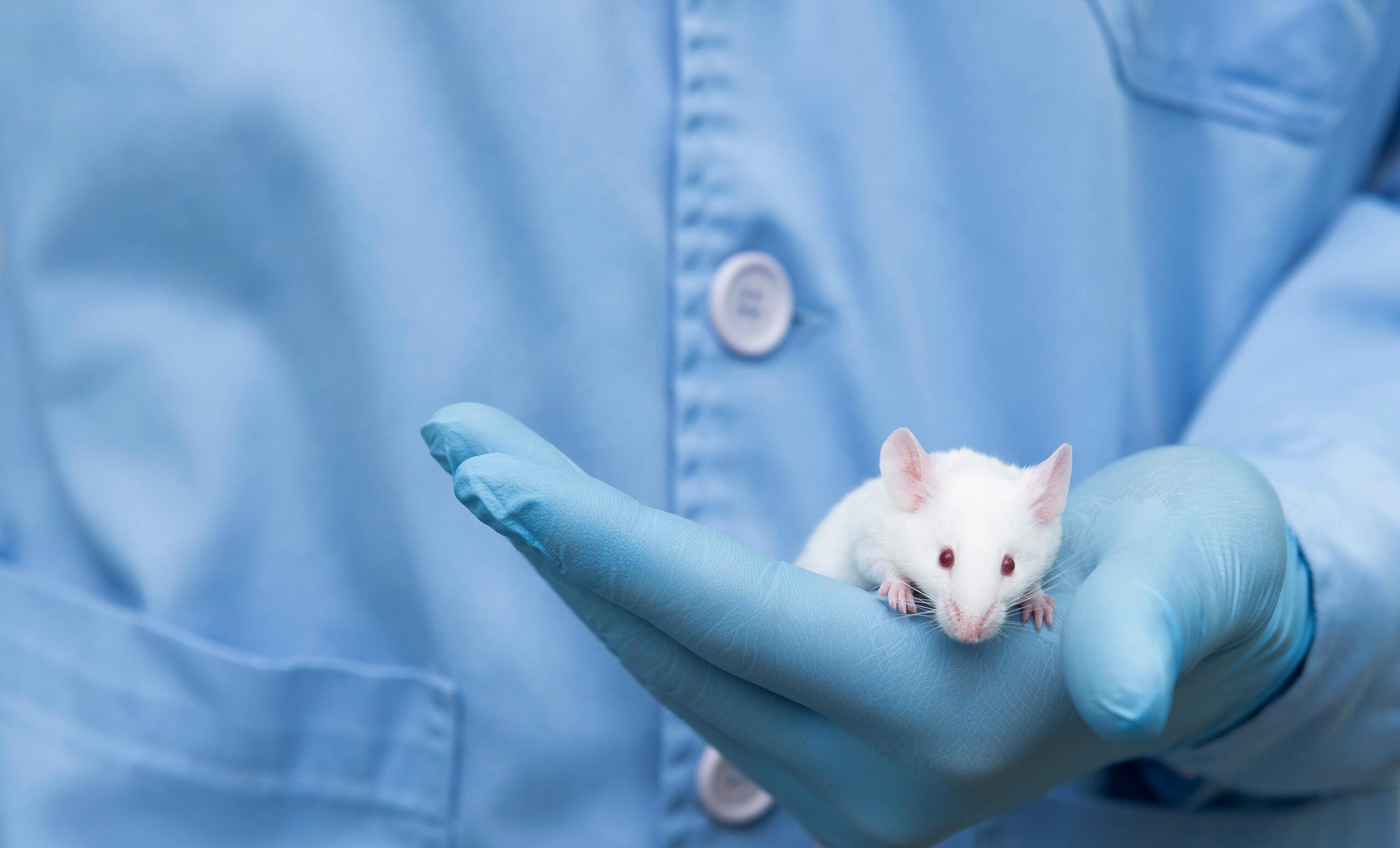
In the News
Mastering mouse models: Top tips for effective ID
Your laboratory mouse identification method during preclinical in vivo studies should not interfere with end results. The model should generate data that is accurate, reliable and consistent, regardless of whether you’re utilizing ear punches/notches, ear tags, tattoos, or microchip transponders.
To save yourself a headache and ensure the integrity and reliability of your preclinical in vivo studies, it’s crucial not to take the decision-making process of your ID method lightly. Consider all available options and choose an effective method of mouse model identification.
How do you do this? Well, for over 10 years, we at Somark Innovations have been at the forefront of animal identification, working with over 300 preclinical research institutes worldwide. With our technology, we’ve successfully ID’d over 3 million mice and rats, solidifying our expertise in the field. We like to think we know a thing or two about mice!
The crux of effective identification during laboratory mouse models is reliability, time efficiency, repeatable accuracy and animal welfare compliance.
In this blog, we’ll detail our top tips for ensuring an effective ID method is embedded within your preclinical in vivo studies. With over 10 years of experience addressing the issues technicians and managers face when handling laboratory mice, here’s our guide to overcoming identification-related obstacles.
But first, let’s drill down into the importance and evolution of mouse models.
Preclinical in vivo studies
Over 2,400 years ago it was recognised that by studying animals, we could learn much about ourselves and gain invaluable information about the phenomenon that is the human body.
By translating the behavioural and health effects of study subjects to our own species, we could advance medicine. Preclinical in vivo studies have been crucial in drug discovery with the utilization of animal models being predominately exclusive to comparative medicine.
Fast forward to 2024 and laboratory mouse models are employed in all fields of research from infectious disease, oncology, immunology and more. Although there is a wide pool of subjects, including but not limited to Zebrafish, C. elegans, rabbits, dogs, cats and snakes, the laboratory mouse is a tiny powerhouse in research.
The king of the hill
The first publication utilizing mouse models was published in 1902 by French biologist Lucien Cuéno. Since then, the utilization of mouse models in research has grown in popularity, mice along with rats account for 95% of all laboratory animals.
Although small in size, the laboratory mouse is mighty in impact. As the preferred species for biomedical research, mice have remarkable anatomical, physiological, and genetic similarities to humans and are not only cost-effective but also easy to maintain.
Mice boast a vast genetic resource, with a 90% similarity to the human genome, making them an invaluable model for medical and genetic studies. As of the 20th century, whereby genetically engineered models became a viable option, there has only been one animal model at the forefront of preclinical in vivo studies. The mouse model quite rightly is ‘the king of the hill’ as said by Dr Thompson, Principal Consultant with a PhD in Molecular and Cellular Biochemistry,
In 1974, Rudolph Jaenisch and Beatrice Mintz infected mouse embryos with SV40 virus and showed that the viral DNA was integrated in the germ line. This breakthrough kickstarted the acceleration of scientific discovery and is evidenced by the growing number of research publications featuring the mighty mouse.
Managing laboratory mouse models effectively
Here at Somark, we provide fast and easy-to-read laboratory mouse identification solutions. Our technology has helped technicians save time and money while ensuring unparalleled accuracy, data integrity, and animal welfare.
Our growing network of scientific and biomedical researchers, along with partnerships with various research institutes and key preclinical organisations, has led to this clear guide to ensuring effective identification and mastering your mouse models:

Study protocols
It is usually the responsibility of the Principal Investigator to establish the ID method deployed in a study group. Pairing this with well-established, well-researched protocols and SOPs will help reduce experimental variability.
Prior to beginning the study, and whilst preparing study applications, extensive details should be provided to offer absolute clarity on research objectives, experimental design, choice of species, volume of mice and more. Within this, the identification method should be detailed, specifically any handling techniques and training processes related to handling to ensure compliance with relevant regulatory bodies.
Transforming these handling details and the specified identification method into a study-wide protocol to ensure the reliability and integrity of the data collected throughout a study.
Better yet, opt for our tail tattooing system! Thanks to our patented safety restraints no handling techniques need to be specified during the application process. Mitigate the risks of excessive handling and take advantage of our readily available SOP!

Adequate training
Maximizing the effectiveness of your study begins with adequate training. Proper identification methods need to be embedded correctly for the success of your research and to ensure the safety of the technician and the laboratory mouse.
Training is a regulatory expectation for bodies such as the IACUC, CCAC, EU, AWERB or AEC. This ensures a broader preclinical effort to guarantee the humane handling and care of mice in research settings.
Our systems are designed to tick all the boxes with training in mind. Both our automated tattoo system and RFID technology were designed for compatibility with novice technicians.
We’re also here for the duration of your preclinical in vivo studies, delivering training videos, resources and synthetic practice mice.

Automated record keeping
The importance of correct, detailed documentation cannot be overstated, especially concerning aspects relevant to mouse identification. Accurate record-keeping guarantees traceability and will aid you in tracking your mice lineage, breeding history and genotype information.
Moreover, having thorough, comprehensive records will help you uphold ethical compliance, by highlighting a dedication to ethical practices when it comes to animal welfare.
Record keeping enables researchers to portray treatment groups and draw accurate conclusions, this is why an RFID tag can be the most suitable solution, particularly with high volumes of mice who require frequent reads.
Our LinkTo application connects Digitail RFID tags to existing laboratory equipment and software. By establishing an automated link between the ID reads and the data collection and interpretation processes, technician input to read rodents is decreased, human error risks are reduced and the reliability of collected records improves.
Ruling out human intervention and manual processes and replacing this with technology and machinery streamline your workflows.
Laboratory efficiency and accuracy has turned towards automation to improve many tasks, including data collection and analysis, which means experimental procedures will most certainly improve in the near future.
Achieve state-of-the-art preclinical in vivo studies with next-generation identification methods such as tail tattoos.

Animal welfare officers
Animal welfare is paramount from an ethics and regulatory perspective. Behavior and welfare risks to the laboratory mouse also risks the integrity of the data associated with that particular study subject.
The principal investigator /investigative personnel are responsible for implementing the appropriate and approved identification methods, researchers can then ensure in-study care and treatment as well as regular monitoring to pick up any distress or welfare issues.
There is an intrinsic reliance on the data and the welfare of a mouse on the identification method used. Tracking the health and behaviour of each mouse over the duration of a study should not be difficult or complicated. If it is, it’s likely the study won’t be approved initially.
Non-invasive identification methods provide the best alliance with an animal’s welfare. This should be a primary consideration when deciding between ID methods, along with a simplified application process, reduced handling requirements and extended read distances.

Choosing the right method
It’s clear that choosing the right ID method is crucial for the success of a study. Embedded in training, protocols, study acceptability, animal welfare, compliance and data reliability to name a few, the method you choose for your identification is crucial.
Advancing your study is only achievable by considering new, alternative methods of ID as Somark amongst others transforms the way that preclinical in vivo studies operate.
For guidance on choosing the best ID method, please visit our application page: Somark Innovations Lab Animal Identification.
If you are a researcher who wants to further improve your mouse model study and the efficiency of captured research data, then shop Digitail and Labstamp!



